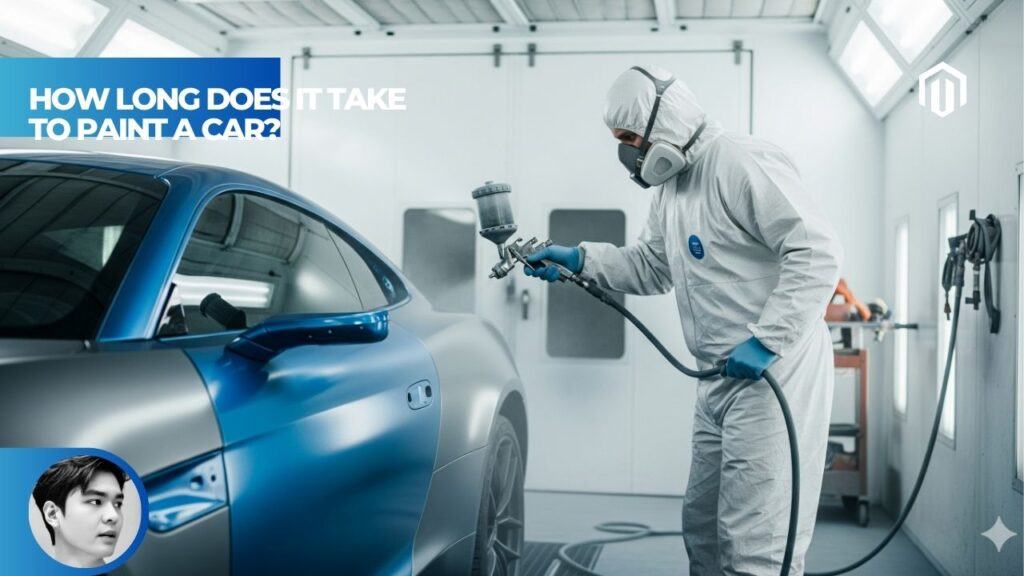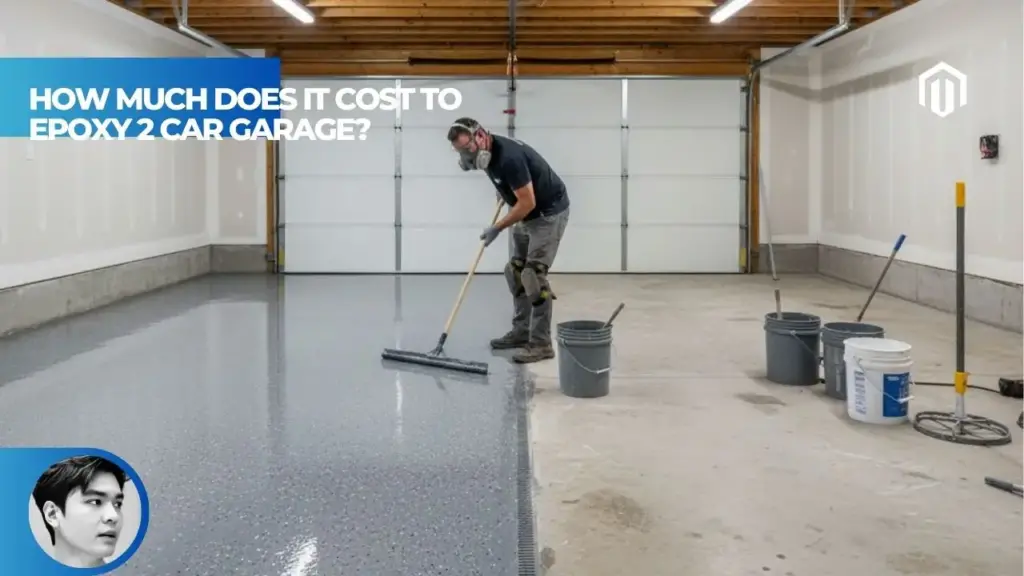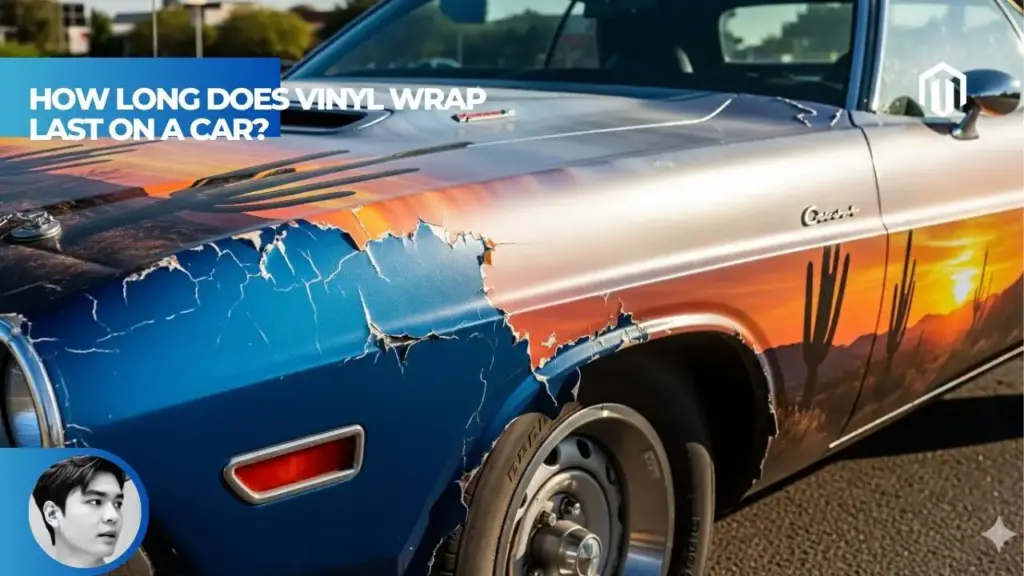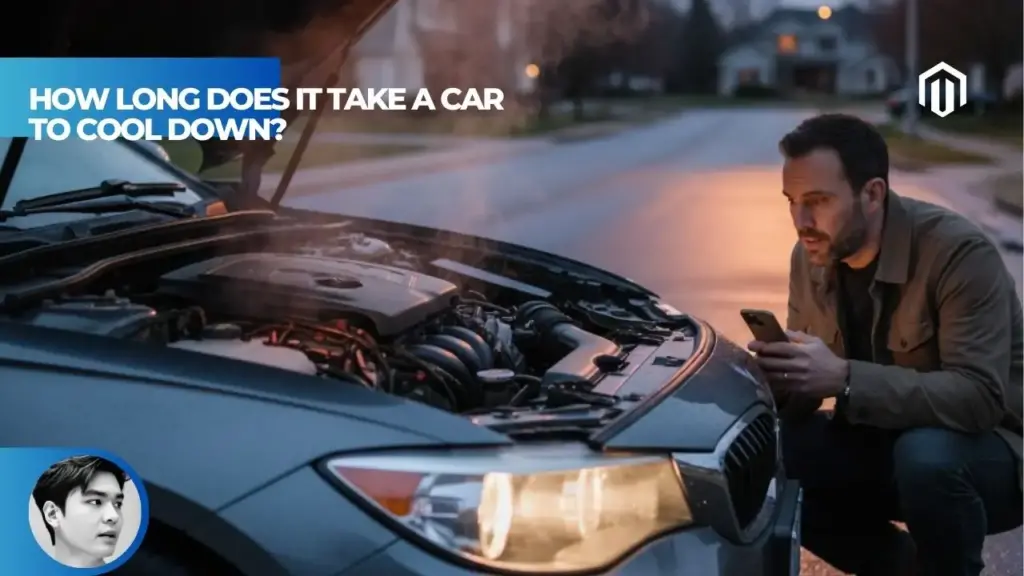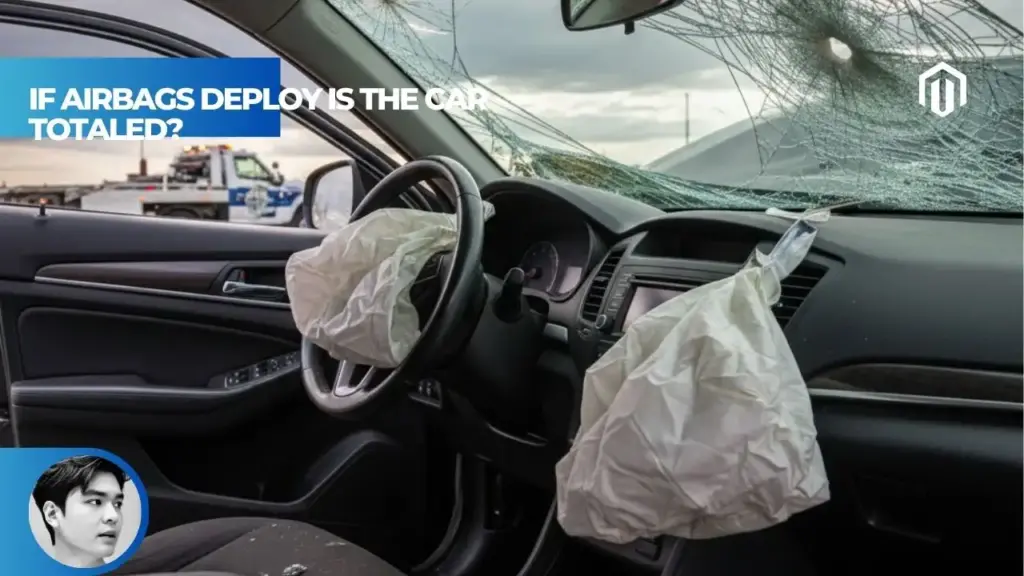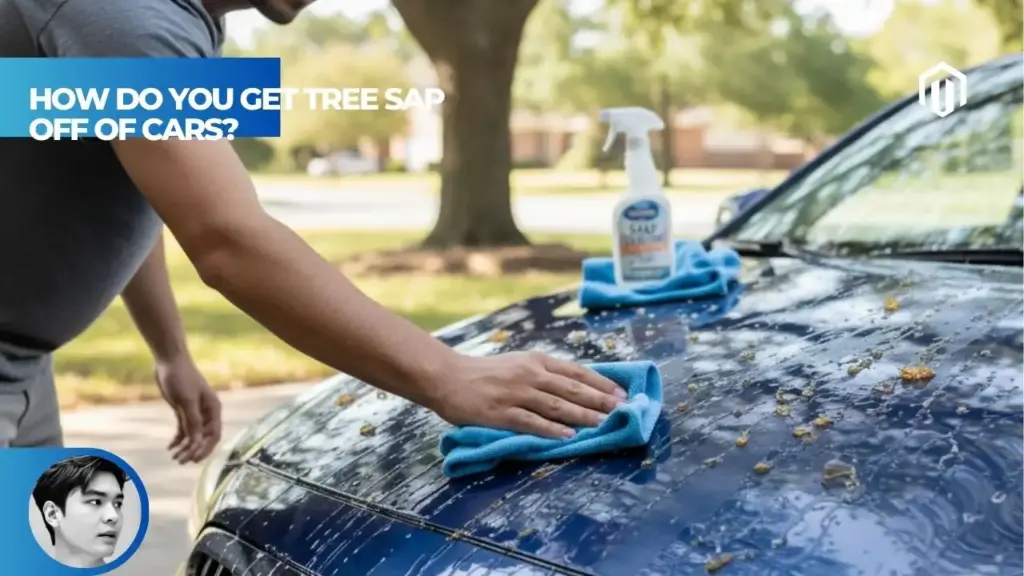You may also like:
- 【Explained】Is It Cheaper to Wrap or Paint a Car? Complete Cost Breakdown
- 【Review】Top 7 Best Ways to Clean a Car After a Body Repair
- 【Explained】How Long Does It Take to Buy a Car? A Step-by-Step Timeline
- 【Explained】How Long Does a Vinyl Wrap Last on a Car? (The 2025 Durability Guide)
- 【Explained】How Long Does It Take to Settle a Car Accident?
A complete car paint job typically takes 3-7 days at professional shops, with preparation consuming 60-80% of the timeline while actual painting requires just a few hours. The paint needs 24-48 hours to dry enough for driving, but full curing takes 30-90 days for the finish to completely harden and reach maximum durability.
Understanding the complete painting timeline helps you plan accordingly, whether you’re dealing with accident damage or simply refreshing your vehicle’s appearance. The process involves far more than just spraying paint, with each phase requiring specific timing for professional results.
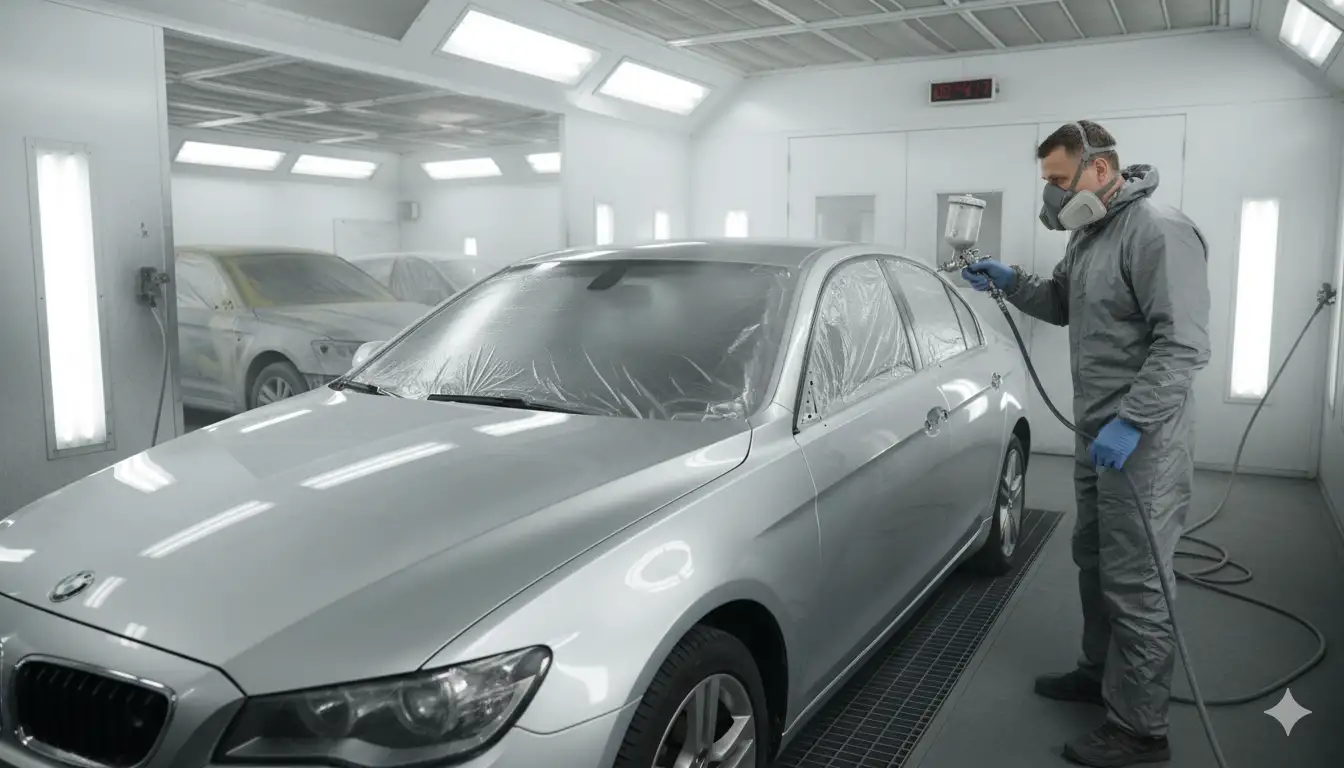
Car Painting Timeline Overview: Days to Weeks Process
Professional Car Paint Job Time vs DIY Duration
Professional shops complete most paint jobs within 3-7 business days, leveraging specialized equipment and experienced technicians to maximize efficiency[1]. This timeline includes vehicle drop-off, preparation, painting, and initial curing before pickup.
DIY paint jobs stretch considerably longer, typically requiring 40-80 hours of actual work spread over 1-2 weeks or more. Weekend warriors often spend multiple weekends completing what professionals accomplish in days. The extended timeline results from limited equipment, learning curves, and working around other commitments.
| Paint Job Type | Professional Timeline | DIY Timeline | Actual Work Hours |
|---|---|---|---|
| Minor touch-up | 1-2 days | 2-3 days | 4-8 hours |
| Panel repaint | 2-3 days | 4-7 days | 8-16 hours |
| Complete repaint | 3-7 days | 1-2 weeks | 40-80 hours |
| Show-quality | 2-4 weeks | 1-3 months | 100+ hours |
Why Does a Paint Job Take So Long
The extended timeline frustrates many customers, but quality paint jobs require patience for proper results. Preparation alone consumes 60-80% of total time, involving meticulous surface preparation that determines final quality[2].
Each paint layer needs specific drying time before applying the next coat. Rushing this process causes orange peel texture, runs, or poor adhesion that compromises durability. Environmental factors like humidity and temperature further influence drying times, potentially adding days to the process.
Modern paint systems involve multiple products working together—primer, sealer, base coat, and clear coat—each requiring proper flash time between applications. Skipping or shortening these intervals leads to failures requiring complete redo.
Full Car Repaint Timeline Breakdown
A complete vehicle repaint follows a predictable timeline when performed correctly. Understanding each phase helps set realistic expectations and explains why quality work takes time.
Day 1-2: Assessment and Disassembly
- Initial inspection and estimate
- Remove trim, badges, and accessories
- Mask areas not being painted
- Begin surface preparation
Day 2-3: Preparation and Bodywork
- Complete sanding of existing finish
- Repair dents, scratches, rust
- Apply body filler if needed
- Final sanding to 400-600 grit
Day 3-4: Priming and Sealing
- Apply primer coats
- Block sand primer smooth
- Apply sealer coat
- Final preparation for paint
Day 4-5: Painting and Clear Coating
- Spray base color coats
- Apply clear coat layers
- Initial curing in booth
Day 5-7: Reassembly and Detailing
- Reinstall trim and accessories
- Wet sand and polish if needed
- Final inspection and touch-ups
- Customer delivery
The 5-Step Car Painting Process Timeline
Step 1: Preparation – The Longest Part of Painting a Car
Preparation dominates the painting timeline, often consuming 2-3 full days for complete repaints. This critical phase determines 90% of the final result quality, making it impossible to rush without compromising outcomes[3].
The process begins with thorough cleaning to remove all contaminants. Technicians then assess the surface, identifying areas needing repair before paint application. Every imperfection visible before painting becomes magnified under fresh paint, making this inspection crucial.
Disassembly follows, removing or masking trim, windows, and components. Professional shops invest 4-8 hours just in proper masking, ensuring clean lines and protecting unpainted surfaces. This meticulous approach prevents costly mistakes and rework.
Step 2: Sanding a Car for Paint
Sanding creates the mechanical bond necessary for paint adhesion, requiring systematic progression through multiple grit levels. Starting with 180-220 grit for initial surface removal, technicians progressively move to 400-600 grit for final smoothing.
Complete vehicle sanding takes 8-16 hours for experienced professionals, longer for DIY enthusiasts. Each panel requires consistent pressure and overlapping passes to avoid creating low spots or sand-through areas that require additional repair.
Modern shops use dual-action sanders to speed the process while minimizing swirl marks. Hand sanding remains necessary for corners, edges, and complex curves where machines can’t reach effectively. This combination of machine and hand work ensures uniform surface texture.
Step 3: Primer Application and Drying Time
Primer application begins once surfaces are properly prepared, requiring 2-3 thin coats for adequate coverage. Each coat needs 15-30 minutes flash time between applications, with final primer drying taking 2-4 hours before sanding[4].
High-build primers fill minor imperfections and provide a uniform base for paint. After drying, technicians block sand the primer with 400-grit paper, revealing any remaining low spots requiring additional filling. This process often requires multiple primer applications to achieve perfection.
Temperature and humidity significantly affect primer drying times. Shops maintain controlled environments around 70°F with 50% humidity for consistent results. DIY painters working in garages face variable conditions that can double drying times.
Step 4: Paint Application Process
The actual painting process moves quickly once preparation is complete, typically requiring just 3-4 hours for color application. Professional painters apply 2-3 base coats, allowing 10-15 minutes flash time between each coat.
According to Autvex automotive refinishing experts, proper spray technique maintains consistent distance and overlap, ensuring uniform coverage without runs or dry spots. Metallic and pearl colors require additional coats for proper coverage and effect.
Paint booth conditions prove critical during application. Downdraft booths provide clean, filtered air while removing overspray, creating optimal conditions for smooth finishes. Temperature control ensures proper flow and leveling of paint materials.
Step 5: Clear Coat and Final Curing
Clear coat application provides the final protective layer and gloss, requiring 2-4 coats depending on desired finish level. Each coat needs 10-20 minutes flash time, with the final coat requiring 24 hours before handling[5].
Premium jobs receive additional clear coat layers for deeper shine and enhanced protection. Some shops wet sand between clear coats, creating mirror-like finishes for show-quality work. This extra attention adds days but produces exceptional results.
Initial curing happens in heated booths at 140-160°F for 30-60 minutes, accelerating the process significantly. However, complete curing continues for weeks after leaving the shop, requiring careful treatment during this period.
Car Paint Drying Time vs Curing Time
How Long Does Car Paint Take to Dry
Paint drying occurs in stages, each with different implications for vehicle use. Surface drying happens within 30-60 minutes, creating a dust-free surface that won’t collect particles. Touch dry status arrives after 2-4 hours, when light contact won’t leave marks.
However, “dry” doesn’t mean ready for normal use. The paint remains soft underneath the surface for days, vulnerable to damage from pressure or chemicals. Professional shops recommend waiting 24-48 hours before driving to prevent damage from road debris or weather.
| Drying Stage | Timeline | Characteristics | Safe Activities |
|---|---|---|---|
| Dust-free | 30-60 minutes | No particle adhesion | Booth removal |
| Touch-dry | 2-4 hours | Light touch safe | Visual inspection |
| Handle-dry | 6-12 hours | Can touch firmly | Tape removal |
| Through-dry | 24-48 hours | Dried through layer | Careful driving |
How Long Between Paint Coats
Proper timing between coats ensures optimal adhesion and finish quality. Base coat applications require 10-15 minute flash times in controlled conditions, allowing solvents to evaporate while maintaining chemical bonding ability.
Clear coat timing proves more critical, with most systems requiring 5-10 minutes between coats when applied wet-on-wet. Waiting too long requires scuffing for adhesion, while applying too soon causes runs and poor leveling.
Environmental conditions dramatically affect recoat windows. High humidity extends flash times by 50% or more, while excessive heat can cause premature drying that prevents proper flow. Professional booths maintain ideal conditions for consistent timing.
30 to 90 Day Full Curing Process
Complete paint curing extends far beyond initial drying, with chemical cross-linking continuing for 30-90 days after application[6]. During this period, the paint gradually hardens to full durability while releasing residual solvents.
The first 30 days prove most critical for protection. Paint remains susceptible to staining from bird droppings, tree sap, and harsh chemicals. Water spots can etch into soft clear coat, creating permanent marks if not addressed quickly.
By day 90, most paint systems reach 95% of ultimate hardness. This extended timeline explains why luxury vehicles often come with specific care instructions for the first three months after delivery or repair.
Professional Shop vs DIY Paint Job Duration
Auto Body Shop Paint Time
Professional auto body shops operate on predictable timelines, typically scheduling 3-5 days for standard paint jobs. This includes built-in buffer time for unexpected issues like hidden damage or weather delays affecting paint conditions.
Established shops like those in Autvex’s certified network maintain multiple work bays, allowing simultaneous processing of preparation, painting, and assembly phases. This parallel workflow significantly reduces total time compared to sequential DIY approaches.
Insurance-approved shops often guarantee completion dates, backed by rental car coverage for delays. Their investment in equipment—from prep stations to curing ovens—enables consistent scheduling regardless of external conditions.
Maaco Paint Job Time
Maaco and similar budget chains advertise completion in 2-3 days for basic paint services, achieving speed through standardized processes and minimal preparation. Their basic packages skip extensive sanding and repair work, focusing on coverage over perfection[7].
The compressed timeline comes with tradeoffs:
- Limited color matching for partial repaints
- Minimal orange peel and imperfection removal
- Standard paint thickness vs premium multi-coat
- Assembly-line approach vs custom attention
For vehicles needing simple color refresh without show-quality expectations, these expedited services provide value. However, collector cars or those requiring extensive prep work benefit from traditional body shop timelines.
DIY Car Paint Job Time Requirements
DIY painting projects typically stretch across multiple weekends, with enthusiasts investing 40-80 hours for complete repaints. Limited equipment and learning curves extend every phase compared to professional timelines.
Preparation alone can consume 20-40 hours for inexperienced painters, with mistakes requiring rework adding more time. Without professional spray booths, painters must wait for ideal weather conditions, potentially delaying progress for weeks.
Successful DIY painters report these typical timeframes:
- Surface preparation: 2-3 weekends
- Primer and block sanding: 1 weekend
- Paint application: 1-2 days
- Clear coat and polish: 1 weekend
- Reassembly and detail: 1 weekend
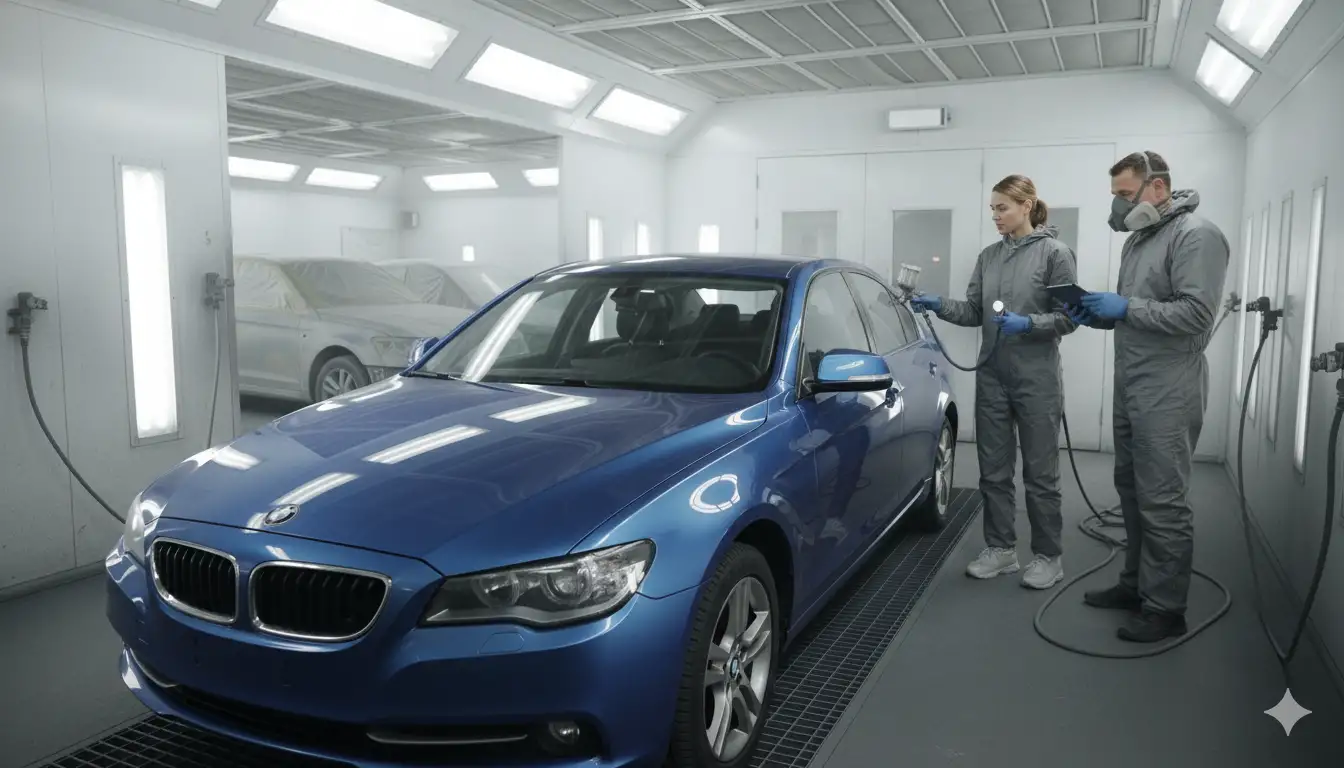
Factors That Influence the Timeline
Bodywork and Damage Repair Impact
Extensive bodywork can double or triple painting timelines, with rust repair and dent removal adding days or weeks to projects. Each repair requires proper curing time before proceeding, creating unavoidable delays.
Collision damage often reveals hidden problems during disassembly. Frame straightening, panel replacement, and structural repairs must be completed before paint preparation begins. Insurance supplements for discovered damage commonly extend original estimates by 30-50%.
Rust repair proves particularly time-intensive, requiring complete removal, treatment, and prevention measures. Surface rust might add one day, while structural rust repair can extend projects by a week or more.
Paint Type and Environmental Conditions
Paint chemistry significantly affects application and drying schedules. Single-stage paints complete faster but offer less durability, while modern base coat/clear coat systems require additional steps but provide superior results[2].
| Paint Type | Coats Required | Dry Time Between | Total Application |
|---|---|---|---|
| Single-stage | 2-3 coats | 30-45 minutes | 4-6 hours |
| Base/Clear | 3-4 + 2-3 clear | 10-15 minutes | 6-8 hours |
| Waterborne | 3-5 coats | 5-10 minutes | 4-6 hours |
| Custom/Pearl | 4-6 + clear | 15-20 minutes | 8-12 hours |
Environmental conditions create the largest variables in paint timing. Ideal conditions—70°F and 50% humidity—allow predictable scheduling. Deviation requires adjusted flash times, potentially adding hours or days to completion.
Shop Efficiency and Equipment
Well-equipped shops dramatically reduce painting timelines through specialized tools and controlled environments. Premium brand dealers invest in advanced systems that cut standard timelines by 30-40%.
Critical equipment affecting timeline:
- Downdraft spray booths ensuring clean application
- Heated curing ovens reducing dry time by 75%
- Computerized paint mixing for accurate color matching
- High-volume air systems for consistent spray patterns
- Infrared drying lamps for spot repairs
Smaller shops without this equipment must allow natural drying times, adding days to projects. However, experienced technicians can partially compensate through superior technique and workflow optimization.
Different Types of Paint Jobs and Their Timelines
Spot Painting vs Full Paint Job
Spot painting repairs typically complete in 1-2 days, focusing on individual panels rather than complete vehicles. This targeted approach minimizes cost and time while addressing specific damage areas.
The process involves feathering existing paint edges, applying primer, and blending new paint into surrounding areas. Skilled technicians achieve invisible repairs, though color matching challenges can extend timelines for difficult metallics or pearls.
Full paint jobs require 3-7 days minimum due to comprehensive preparation and complete coverage. Every surface needs attention, from hidden door jambs to engine bay edges, multiplying the work compared to spot repairs.
Car Paint Booth Time
Actual booth time represents a small fraction of total project duration, typically just 4-8 hours for complete paint application. However, booth scheduling often creates bottlenecks in busy shops, potentially delaying projects.
Professional booths cycle through multiple stages:
- Prep mode: Cleaning and tack cloth (30 minutes)
- Paint mode: Application with filtered airflow (2-4 hours)
- Flash mode: Between coat drying (15-30 minutes each)
- Bake mode: Accelerated curing (45-60 minutes)
Shops typically schedule booth time carefully, completing all preparation before booth entry to maximize efficiency. This coordination requires precise timing of multiple projects.
Custom vs Standard Paint Jobs
Custom paint jobs extend timelines exponentially, with elaborate designs requiring weeks or months for completion. Multi-color schemes, graphics, and special effects each add layers of complexity beyond standard applications.
Standard single-color repaints follow predictable 3-7 day schedules. Custom work involves:
- Design and planning: 1-2 days
- Base preparation: 2-3 days
- Multiple color applications: 3-5 days
- Graphics/airbrushing: 2-10 days
- Clear coating and finishing: 2-3 days
Show-quality custom work can involve 200+ hours of labor, with some projects spanning several months. These timelines reflect artistic creation beyond basic color application.
Post-Paint Care and Restrictions
How Long After Painting Can I Drive My Car
While paint feels dry within hours, experts recommend waiting 24-48 hours minimum before driving newly painted vehicles[8]. This allows sufficient hardening to resist road debris and weather exposure.
Initial drives should be short and careful, avoiding highways where rock chips pose greater risks. The soft paint remains vulnerable to damage for weeks, requiring defensive driving habits during the curing period.
Professional shops often perform final quality checks after initial curing, addressing any issues before customer delivery. This typically occurs 24-48 hours after paint completion, aligning with safe driving timelines.
How Long After Painting Can I Wash My Car
New paint requires special care regarding washing, with experts recommending no washing for 30 days after painting[8]. During this period, the paint continues releasing solvents and hardening to full durability.
If washing becomes necessary, use only:
- Gentle hand washing with soft cloths
- pH-neutral car soap without additives
- Thorough rinsing to prevent soap residue
- Chamois or microfiber drying
Avoid these for 60-90 days:
- Automatic car washes with brushes
- Pressure washers on direct spray
- Harsh detergents or degreasers
- Wax or polish applications
- Clay bar treatments
How Long After Paint Can Car Get Wet
Light moisture exposure is generally safe after 48-72 hours, but extended wetness should be avoided for optimal curing. Rain during the first week won’t damage properly applied paint, though immediate drying prevents water spots.
The main concern involves water trapped against soft paint, potentially causing staining or clouding. Park under cover when possible during the first month, especially avoiding sprinklers and tree drippings that can etch soft clear coat.
Swimming pool chemicals, ocean salt spray, and acid rain pose particular risks during curing. If exposure occurs, rinse immediately with clean water and gently dry to prevent permanent marking.

Key Takeaways
- Complete paint jobs require 3-7 days at professional shops, with prep work consuming 60-80% of time
- Paint dries in 24-48 hours for driving but needs 30-90 days for full curing
- DIY projects take 40-80 work hours spread across multiple weekends
- Each coat needs proper flash time of 10-30 minutes to prevent failures
- Environmental conditions significantly impact all timing, potentially doubling schedules
- Avoid washing for 30 days and harsh chemicals for 90 days post-painting
- Custom work extends timelines from days to potentially months for complex designs
Next Steps
Start by obtaining detailed estimates from 2-3 reputable shops, specifically requesting timeline breakdowns for each phase. Ask about their equipment capabilities, particularly whether they have heated curing ovens that can reduce overall time. Compare warranties and understand what’s covered if problems arise during the curing period.
For DIY consideration, honestly assess your available time, workspace, and equipment. Factor in learning curves and potential mistakes requiring rework. Calculate total costs including materials, tools, and your time value to determine if professional service offers better value.
Schedule your paint job strategically, avoiding rainy seasons or extreme temperatures that delay curing. Arrange alternative transportation for at least one week, allowing flexibility if delays occur. Plan for the 30-90 day curing period by clearing your schedule of long trips or situations requiring immediate washing.
Document existing damage thoroughly with photos before work begins, ensuring clear communication about repair scope. Request progress updates during the project and inspect carefully before accepting delivery. Understanding the complete timeline helps set realistic expectations and ensures satisfaction with your vehicle’s refreshed appearance.
Frequently Asked Questions
How long does it take a professional shop to paint a car?
Professional shops typically complete standard paint jobs in 3-7 days, including preparation, painting, and initial curing, though complex repairs or custom work can extend timelines to 2 weeks or more.
How long does a car paint job take to dry?
Paint dries to touch within 30-60 minutes, becomes safe for careful driving after 24-48 hours, but requires 30-90 days to fully cure and reach maximum hardness and durability.
Can a car be painted in one day?
While basic paint application is technically possible in one day, quality work requires multiple days for proper preparation, application of multiple coats with appropriate drying time, and initial curing.
Why does it take 3 days to paint a car?
The 3-day minimum accounts for 1-2 days of essential preparation including sanding and priming, actual painting and drying time, plus necessary curing between coats for proper adhesion and finish quality.
How long does it take for new car paint to fully cure?
Complete curing takes 30-90 days depending on paint type, environmental conditions during application, and coating thickness, during which the paint gradually hardens to final durability.
What is the longest part of painting a car?
Preparation, including bodywork, sanding, and priming, typically consumes 60-80% of total project time, as this crucial phase determines the quality of the final paint finish.
How long does it take to paint a car yourself?
DIY paint jobs typically require 40-80 hours of actual work spread over 1-2 weeks minimum, with inexperienced painters often needing additional time for learning and potential rework.
How long after a car is painted can it get wet?
Wait at least 48-72 hours before any water exposure, avoid washing for 30 days, and prevent prolonged wetness during the full 30-90 day curing period for optimal paint durability.
References
- Speedway Media. (2025). How Long Does Paint and Auto Body Repair Take. https://speedwaymedia.com/2025/08/14/how-long-does-paint-and-auto-body-repair-take/
- West Delray Collision. (2025). How Long Does It Take to Paint a Car? Full Breakdown. https://westdelraycollision.com/car-paint-timing/
- Victory Auto Body. (2024). How Long Does It Take to Repaint a Car? https://www.victoryautobody.com/blog/how-long-does-it-take-to-repaint-a-car
- Valley Collision. (2022). How Long Does It Take to Paint a Car? https://valleycollision.com/blog/how-long-does-it-take-to-paint-a-car/
- DSPORT Magazine. (2025). Painting a Picture: The Basic Stages of Automotive Paint. https://dsportmag.com/the-tech/painting-a-picture-the-basic-stages-of-automotive-paint/
- Craftsman Collision. (2025). How Long Does Auto Body Paint Take to Dry? https://craftsmancollision.com/news/how-long-auto-body-paint-dry/
- Elis Auto Body. (2021). How Long Does It Take to Paint a Car? https://elisautobody.com/how-long-does-it-take-to-paint-a-car/
- Soapy Joe’s Car Wash. (2024). How Long Should You Wait Before Washing Your Car After a New Paint Job? https://soapyjoescarwash.com/how-long-should-you-wait-before-washing-your-car-after-a-new-paint-job/

I am a senior automotive analyst at Autvex. Expert vehicle evaluations, in-depth reviews, and objective analysis helping readers make informed automotive decisions with years of industry experience.

